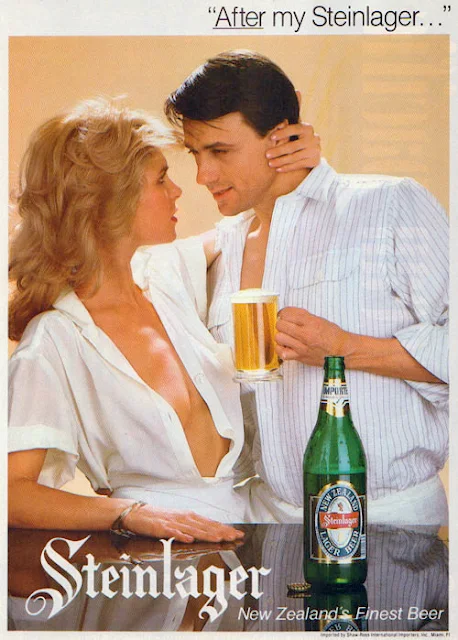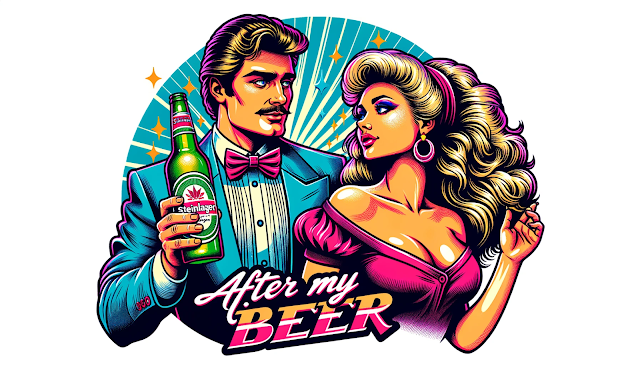Steinlager stands as an iconic testament to the rich brewing history of New Zealand. Its enduring legacy, despite the rise of craft beer, affirms its status among the pantheon of remarkable beers.
While Steinlager continues to command its presence in the market, it owes its stature not just to its distinct taste but also to a robust marketing strategy by Lion Nathan. The beer's association with the illustrious All Blacks and its household name status in New Zealand further cements its reputation.
For the uninitiated, the discussion here revolves around Steinlager Classic – the original, timeless version, and not the newer "Pure" variant. And, certainly, not the Steinlager Tokyo, which many perceive as a mere marketing tactic without the genuine spirit of its predecessor.
Steinlager Classic embodies tradition, ambition, and unparalleled flavor – characteristics that homebrewing enthusiasts aspire to replicate.
While the precise formula for Steinlager remains a guarded industry secret, discerning palates have identified some key components. The beer is renowned for its incorporation of the 'green bullet' hops. This particular hops, developed in New Zealand, imparts a signature bittering quality, making it an ideal ingredient for lager brewing.
Steinlager clone recipe for more seasoned brewers
If you're into boiling your wort and getting the timings of the hop additions just perfect, here's some a Steinlager clone recipe that seems pretty handy.
It comes from a bloke called Timmy:
- 4.00 kg Pilsner, Malt Craft Export (Joe White) (3.2 EBC) Grain
- 0.25 kg Carahell (Weyermann) (25.6 EBC) Grain
- 0.15 kg Carafoam (Weyermann) (3.9 EBC) Grain
- 0.15 kg Wheat Malt, Malt Craft (Joe White) (3.5 EBC) Grain
- 60 min 20.00 gm Green Bullet [13.50 %] (60 min) Hops
- 10 min 15.00 gm Green Bullet [13.50 %] (10 min) Hops
- 10 min 25.00 gm Northern Brewer [8.50 %] (10 min) Hops
- 10 min 0.50 items Irish Moss (Boil 10.0 min) Misc
- 1 min 25.00 gm Northern Brewer [8.50 %] (1 min) Hops
- 1 packet Budvar Lager (Wyeast Labs #2000) Yeast-Lager
You'll have an estimated 1.056 original gravity and final gravity of 1.014 and approx 30 IBU.
There are other Steinlager clone recipes around but they are more or less the same as this one.
One or two seem to suggest that the beer contains Hallertau Hops but others have countered that was an older version of the beer.
but others have countered that was an older version of the beer.
Indeed, given the green bullet hops wasn't first produced until 1972 and that Steinlager has been around since the late 1950's, the beer drunk since at least 1972 has a different hops than what the originally beer started with - which is probably no biggie as it was in 1977 when Steinlager was crowned the world's best beer.
It also won the Les Amis du Vin Award (a beer competition of renown) again in '78 and '80 so it's the green bullet hops that helped win the world over.
One or two seem to suggest that the beer contains Hallertau Hops
Indeed, given the green bullet hops wasn't first produced until 1972 and that Steinlager has been around since the late 1950's, the beer drunk since at least 1972 has a different hops than what the originally beer started with - which is probably no biggie as it was in 1977 when Steinlager was crowned the world's best beer.
It also won the Les Amis du Vin Award (a beer competition of renown) again in '78 and '80 so it's the green bullet hops that helped win the world over.
This article has a sweet history of the beer as it became popular around the world.
Pause:
Let's re create that very sexist advertising to get some color in to the piece:
How to clone Steinlager with a Beer Kit
To recreate a Steinlager-like brew, gather the following essentials:
- A can of quality lager beer malt
- Green Bullet hops from New Zealand
- Beer enhancer (DME)
While the kit's yeast will suffice, you might consider using Budvar Lager yeast for a distinct touch.
Follow the standard beer-making procedure with your kit, and remember, sanitation is paramount!
Cold storage is beneficial for your lager. Perhaps store it in the shed?
Advanced Tip: For those venturing to replicate Steinlager Pure, it's worth noting that Pure integrates Pacific Jade hops, Nelson Sauvin hops, and potentially some Green Bullet hops as well. Choose your hops wisely!




